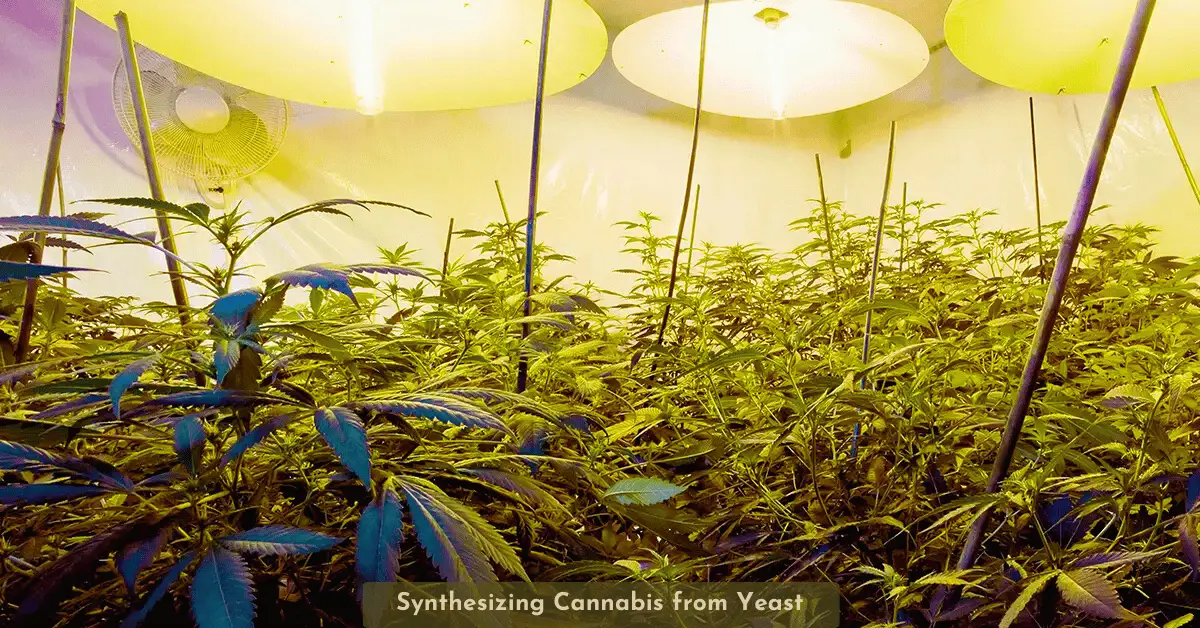Researchers at the University of California have achieved a groundbreaking innovation — successfully biosynthesizing cannabinoids from Saccharomyces cerevisiae (brewer’s yeast). This pioneering method allows scientists to produce both natural and novel cannabinoids at scale, opening new possibilities for medical research, pharmaceutical applications, and global cannabis innovation.
How Scientists Synthesized Cannabinoids Using Yeast
By introducing cannabis pathway enzymes into yeast and engineering its metabolic pathways, researchers created a highly efficient biosynthesis process. Using galactose substrates, yeast cells were programmed to produce cannabigerolic acid (CBGA) — the “mother cannabinoid” from which THC, CBD, and other compounds are derived.
This approach offers a cost-effective and sustainable alternative to traditional cannabis cultivation, enabling the production of rare cannabinoids and their analogs without relying on extensive farming.
Why Yeast Biosynthesis Matters
Traditionally, the Cannabis sativa plant has been the sole source of cannabinoids, but natural extraction faces limitations:
-
Legal restrictions on cultivation and research
-
Structural complexity of cannabinoids, making synthetic production challenging
-
Limited yields of rare cannabinoids
With yeast-based biosynthesis, scientists can now produce cannabinoids faster, cheaper, and at scale — unlocking opportunities for pharmaceutical companies, wellness industries, and medical researchers worldwide.
From Yeast to THC and CBD
The process begins by generating olivetolic acid and combining it with geranyl pyrophosphate (GPP) via engineered pathways, resulting in CBGA.
From CBGA, researchers synthesized:
-
Tetrahydrocannabinolic acid (THCA) → converted to THC after decarboxylation
-
Cannabidiolic acid (CBDA) → converted to CBD
-
Novel cannabinoid analogs for advanced medical studies
This approach allows for precise control over cannabinoid composition, making it possible to customize compounds for specific therapeutic effects.
Expanding the Potential: Creating Novel Cannabinoids
One of the most exciting breakthroughs is the ability to create unnatural cannabinoid analogs — compounds not found in nature but designed to enhance medicinal properties.
By tweaking fatty acid precursors and post-fermentation modifications, researchers generated novel cannabinoids with potentially higher potency, better receptor targeting, and unique therapeutic applications.
Medical and Commercial Implications
This innovation is set to revolutionize the cannabis industry:
-
Medical Research → Enables large-scale testing of cannabinoids for conditions like chronic pain, epilepsy, and neurological disorders.
-
Pharmaceutical Development → Offers a scalable platform for producing FDA-ready cannabis-derived medicines.
-
Global Cannabis Market → Reduces dependency on agricultural production, making rare cannabinoids more accessible and cost-efficient.
With rising global demand, this breakthrough can position companies like Bicaro Holding at the forefront of cannabis innovation.
Key Takeaway
Producing cannabinoids from yeast marks a transformative step in biotechnology and medical cannabis research. By bypassing cultivation challenges and enabling the creation of custom cannabinoid profiles, this technology has the potential to accelerate treatments, unlock new therapies, and reshape the future of cannabis science.
Read also: Thailand’s Hemp Market in 2025: Growth, Investment, and Global Potential

